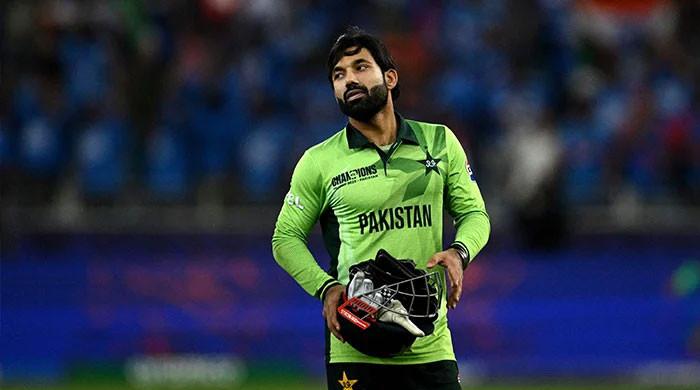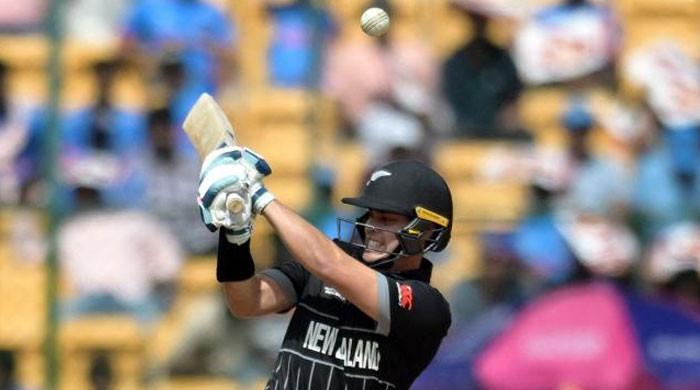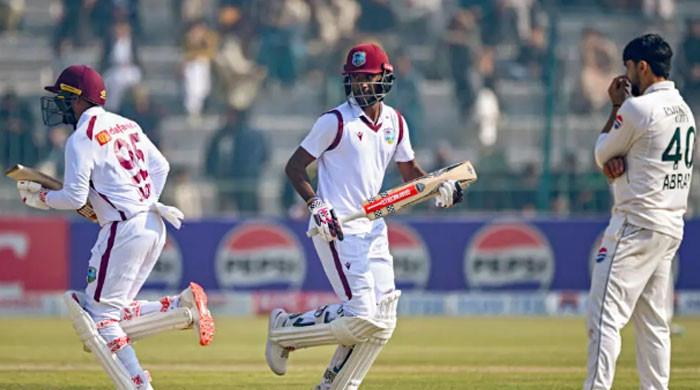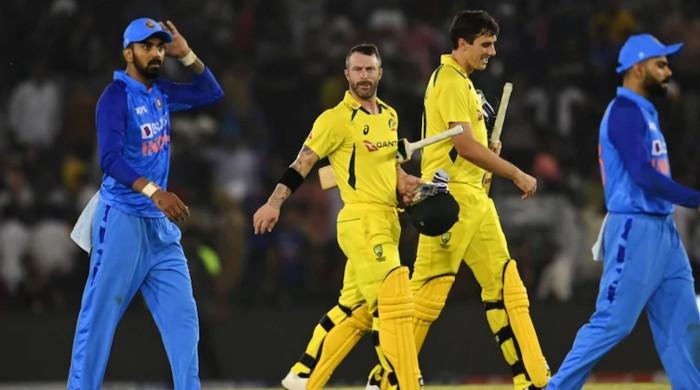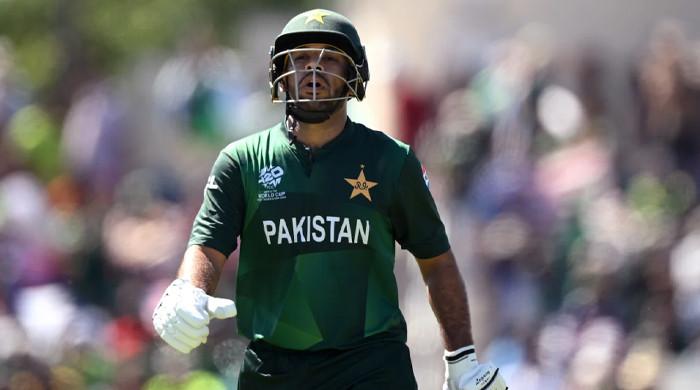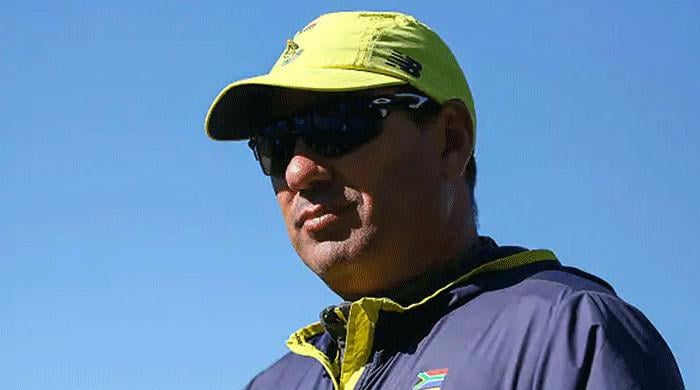From milestones to tombstones!
When Younis Khan, Pakistan’s legendary batsman, boarded the flight to New Zealand for a two test series, he had already scored 9663 runs in 110 Test Matches with the help of 33 hundreds. He...
November 30, 2016
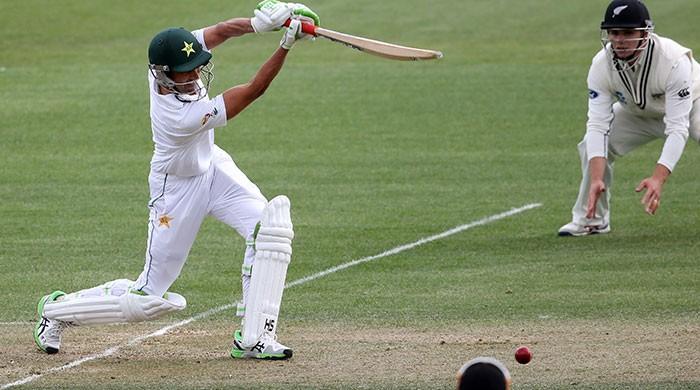
When Younis Khan, Pakistan’s legendary batsman, boarded the flight to New Zealand for a two test series, he had already scored 9663 runs in 110 Test Matches with the help of 33 hundreds. He has been the highest run-getter for Pakistan and is showing no signs of fatigue. With just 330-odd runs away from becoming first Pakistani to score 10,000 runs, he must definitely be ‘over the moon’, but it has been a norm in Pakistan, - milestones usually turn into tombstones for Legends.
Mian Mohammad Saeed captained Pakistan in earliest of its ‘unofficial’ days. It was in 1951, that Abdul Hafeez Kardar, a Test Cricketer who played for United India, by-passed Saeed and started to lead Pakistan team till 1958. Ironically, when Kardar wanted to return couple of years later, he had to go through the same Saeed, who was now the Chairman of Selectors and the Captain announced for the tour of India, was his son-in-law, the legendary pacer, Fazal Mehmood. Whatever the reason for his return, Kardar’s final Test figures were 26 Tests, 927 runs, which is 73 short of 1,000.
Years later, Kardar became Chairman of Selectors and kept ‘little master’ from becoming the first Pakistani to score 4000 Test runs. The year was 1969, and the last 6 Tests of Hanif Muhammad, yielded less than 150 runs. Hanif Muhammad needed 85 runs and with his current record, Kardar was in no mood to waste a full series for his personal satisfaction. Kardar’s threat, though filmy, had a lot to do with the ‘future of your younger brothers’, one of whom, Sadiq, made his debut in the Test which turned out to be the last for the great Hanif. The same Test saw the debut of the bespectacled Zaheer Abbas, who later became the first Pakistani to score 4000 runs.
3 years later, Kardar stood in the way of another ‘Saeed’ and left him 9 runs shy of 3000 runs. Saeed is still the fastest Pakistani Cricketer to reach 1000 test runs. A regular ‘one-down’ for most part of his career, he had a mercurial temperament. During Pakistan’s tour of Australia in 1972/73, Muhammad Ilyas and Talat Ali, both openers got injuries and Saeed was asked by Captain Intikhab Alam to open in the test matches. Three innings and 95 runs later, including a 72-ball half century at Melbourne, Saeed relented. Before the final test, he refused to emerge from the toilet citing health problems.
It was learnt that two hours before match at Sydney, Saeed went for a stroll towards the pitch which was still green. Saeed, fearing Lillie’s bouncers, feigned an injury and didn’t play the match. The newly appointment head of Board of Cricket Control in Pakistan, Abdul Hafeez Kardar was in Australia and decided to look into the matter. Saeed was seen dancing away at a Sydney nightclub, when Naseem-ul-Ghani was opening in his place. Saeed Ahmed, who made his debut under Kardar, was banned for life by the same man. At 35, he was stranded at 2,991 runs from 41 tests, with 5 hundreds at an average of over 40 runs per innings.
Exactly 10 years later, Majid Khan, wanted to become the first Pakistani to score 4000 runs. Zaheer and Majid were neck and neck after the ‘record’. It was January of 1983, when in Hyderabad; Zaheer, in superb form, fulfilled his dream, while Majestic Majid was provided the chance to score the remaining 69 runs in the final match against India in Lahore. For the generation born in the 80s, Majid Khan was someone who once walked back, after edging a delivery at 98, without waiting for the umpire. If he was out, there was no power on earth, which could make him stay at the wicket. In his final test, he was given caught behind for a duck. For someone who had been a compulsive ‘walker’, that day he stood at the crease, clearly showing that he didn’t edge the delivery. There aroused speculations whether the umpire was asked to raise his finger at any available chance against Majid.
Since Imran Khan began to lead the side couple of months earlier, Majid Khan got to play only two tests, six months apart. The man who was being groomed to replace him was Mansoor Akhtar, who played the complete Test series in England, home series against Australia and 3 out of 6 tests against India. Always found wanting against swing, he sank without a trace.
Zaheer Abbas completed 5000 test runs in November 1984, against New Zealand, but his last six tests could give him just 47 runs. He was shown the exit door as he had already served Pakistan for over 15 years.
By Zaheer’s retirement, Javed Miandad had over taken him as the highest run-getter for Pakistan. He had, by then, scored 5247 runs in 69 Tests, at an incredibly high average of 57. Miandad was in prolific form until mid 1989, 97 Tests, 7422 runs and 21 hundreds at 57. His last 27 Tests could give him 1410 runs at an average of 37, with just 2 hundreds. In Dec 1993, when his Test career was brought to an abrupt end, he was still 1168 runs short of the magical 10,000 figure. Sunil Gavaskar was the only one who had crossed that mark by that time, and Javed was unable to do it. Because of his troubling back, his batting went into decline and when he was ‘not selected’ for the New Zealand tour in 1994, his average had dropped to 52.57.
The story of Inzamam-ul-Haq’s last innings was very much like Australian great Don Bradman. They both got a farewell, knew what they wanted to achieve, but failed at to get it. The master blaster and the first Pakistani to score 10,000 ODI runs was unable to beat Javed Miandad into the record books. Inzamam had scored 25 hundreds while Miandad had 23. Both were batting greats of their own kinds and their record speaks for itself.
Inzamam had 2 hundreds in matches that Pakistan lost, Javed had only one.
Inzamam had a triple hundred and Javed missed one by a whisker.
Inzamam had 10 centuries outside the comfortable Asian zone, while Javed had 9 and
Inzamam averaged 50 in Test matches while Javed ended his career at 52.57
As Inzamam ul Haq entered the ground in October 2007 for his final innings, he needed 6 runs to overtake Javed Miandad’s record of 8832 runs. He was stumped after scoring 3, and was left two runs short of Javed.
Younis can consider himself lucky, as he is living in an era when Pakistan gets 8-10 Tests a year. There was a time in 60s, when Pakistan had years without Cricket. He is nearing 10,000 runs and is still fit at 38 years. He has served Pakistan well for the last 16 years, right from his century on debut in 2000. He is one of the four Pakistanis who have scored triple hundreds. He has the most number of hundreds in the fourth innings, has the highest average for a Pakistani with so many runs and has the best rate of converting fifties into hundreds among all-time cricketers. Something is missing though.
Pakistan never lost a Test when Hanif Muhammad scored a century while Younis’s 7 hundreds have been scored in losing matches.
Younis has scored century against every nation, pity that during Miandad’s prime, South Africa was banned and Zimbabwe was an ODI side.
Miandad had at least 2 centuries in Australia, England and West Indies and 3 in New Zealand, while Younis has two in England, one in West Indies, New Zealand, South Africa and Zimbabwe and none in Australia
Saeed Ahmed, Zaheer Abbas and Muhammad Yousuf had excellent cover drives and hooks in their repertoire, while Younis only has sweep shot, though very effective.
How many of you would give him the bat, if Pakistan team requires 4 runs off the last ball of a tense Indo-Pak final?
By seeing too much of action from UAE, the minds of people like me have become deserted and they think a 100 in UAE is a hundred anywhere. In early part of his career, he was not even an automatic choice. He was tried as a bowler and even as a wicket-keeper. I wonder which of the greats started bowling, or turned to wicket-keeping, just to keep their places intact. Last year, he expressed his desire to lead Pakistan one more time, before retiring, but it seems that it won’t materialize.
Striking Similarities;
He has his mood swings like Saeed Ahmed, ironically whose half-brother and a Test Cricketer, was also named Younis. Younis Khan left captaincy on couple of occasions, most famously in 2006, refusing to become a dummy captain in place of Inzamam.
He faced a revolt from his team mates in 2009, just like Javed Miandad.
Got forcefully selected for the World Cup 2015, in a similar way Miandad was, way back in 1996. and
Despite failures in limited overs cricket, demanded for captaincy in Pakistan Super League. In the end, he was not even selected.
Younis would be the 13th player to reach 10,000 run mark. It’s no more an achievement as only Kiwis, Bangladesh and Zimbabweans are not part of the list. Sri Lanka, a team which got Test Status 30 years after Pakistan, has 2 players who have crossed the mark. Apart from them, there are three Aussies, three Indians, two West Indians, one Englishman and one South African also on the list. Sachin Tendulkar wasted couple of matches for India, just to get his 100th hundred, but Rahul Dravid, the backbone of India’s middle order for more than a decade, decided to call it a day when in his prime. Younis Khan is stuck in the middle, he is going after a record, which is no more a record, but his personal run chase can ruin Pakistan’s series in Australia.
On the other hand, the unluckiness of number 13 might help in making ‘two wrongs into one right’. Younis, whose ODI and test record in Australia is unimpressive, wants to achieve the impossible down under. He is still 321 runs short of the ‘once’ magical figure. 12 years back when Pakistan went to Australia, Younis amassed 259 runs in 3 Tests, with one fifty. With Younis’s recent form, it would be advisable to stay out of the series and wait for the next. To score 300 runs in a 3-Test series against Bangladesh, that too in UAE, is always a better option.
Last time Pakistan toured Australia, another Pathan cricketer wanted to end his career by becoming the first all-rounder to score 8000 runs and take 400 ODI wickets. He became the ‘slowest ever’ to reach 8000 landmark and fell 5 wickets short of the record. In the end, he ruined the entire tournament for his skipper Misbah-ul-Haq.
The problem with us is that when we can’t find a hero, we create our own. Most of the time, we have turned the side-hero into a hero.
It happened in Lollywood, throughout the 80s, when there was no competition whatsoever as Indian films could be easily watched on VCR. This allowed Sultan Rahi, an ordinary actor with limited acting ability, in cashing the moment. He worked in record number of movies, mostly with the same subject, and the masses had no option but to accept him as their Hero, Savior. It brought a sad end to quality actors of that era. Sultan Rahi’s blockbusters surely didn’t make him as elegant as Waheed Murad or as versatile as Nadeem, but for the cinegoers, he was the best available option.
Similarly, Younis Khan is our hero nowadays, when there is no cricket in Pakistan and we say him scoring on the same pitches. There is no harm in going for the milestone, but Pakistan is in a position to win a Test in Australia after 21 years. Aussies have just been beaten by South Africa and there is a slight chance.
Younis has always played for Pakistan and has an enviable record as far as integrity is concerned. But there is a thin line between ‘Playing for Pakistan’ and ‘Playing with Pakistan’. Going to a country where he has never managed a hundred and dreaming of 300 runs can turn into a nightmare for others.
It’s difficult to make someone understand who has once threatened to shoot himself, when ignored by selectors. Well, Guns and Tombstones do have a strong connection.




